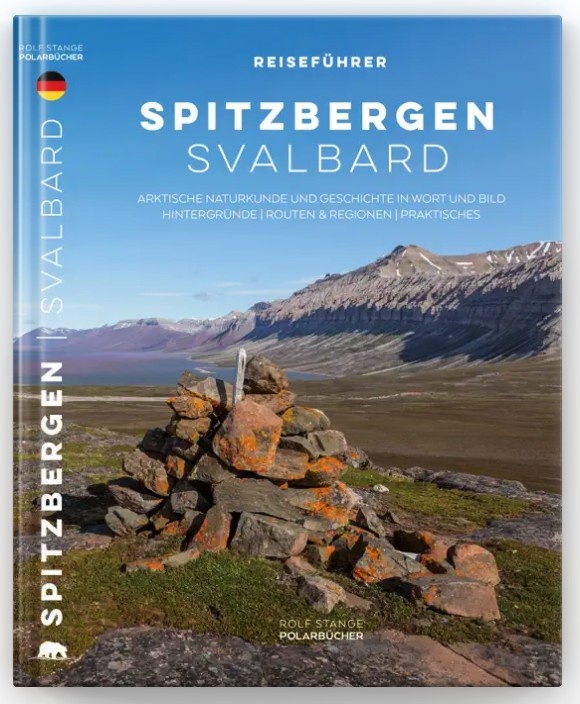









Spitzbergen-Svalbard: der Spitzbergen-Reiseführer
- Inklusive 9% MwSt.: €30,-
- Ohne MwSt: €27,52
- Versandkosten nur 7,82 € nach Deutschland
- An Werktagen vor 17 Uhr bestellt? Versand am selben Tag!
- 14 Tage Rückgaberecht
- Bei uns ist nichts unmöglich!






























| Autor | Rolf Stange |
| Sprache | Deutsch |
| ISBN | 9783937903590 |
| Verlag | Rolf Stange |
| Seiten | 608 |
| Größe | 14,8 x 21,0 cm |
| Format | Taschenbuch |
| Bilder | Farbfotos, Karten und QR-Codes |
| Erscheinungsjahr | 8. Auflage 2025 |
Dies ist die neue überarbeitete 8. Auflage der deutschen Version des Spitzbergen-Reiseführers, eines umfassenden Reiseführers zur arktischen Inselgruppe Spitzbergen.
Spitzbergen-Svalbard: der Spitzbergen-Reiseführer bietet Ihnen detaillierte Informationen zur Reisevorbereitung und -nachbereitung, zur Tier- und Pflanzenwelt Spitzbergens, seiner Natur und Geschichte und zu allen Regionen und Inseln. Zahlreiche textnahe Karten sämtlicher Regionen ermöglichen den geographischen Überblick. Darüber hinaus bietet das Buch Antworten auf eine Reihe praktischer und wichtiger Fragen wie: Wie kann man auf Spitzbergen sinnvoll reisen? Welche Jahreszeit bietet sich an? Welche Umweltschutz-Regelungen muss ich kennen (einschließlich der neuen, ab 2025 geltenden Regeln), mit was für Risiken im Gelände ist zu rechnen?
Es gibt Hintergrundinformationen zu naturkundlichen Themen wie Geologie, Landschaft und Gletscher, Klima und Wetter sowie Tiere und Pflanzen von Svalbard mit Beschreibungen zahlreicher Arten. Ein umfangreiches Kapitel ist den verschiedenen Teilen Spitzbergens gewidmet: nicht nur zu allen Siedlungen (Longyearbyen, Barentsburg, Ny-Ålesund, Pyramiden) und Stationen (Bjørnøya, Hopen, Hornsund), sondern auch zu allen Fjorden und Inseln finden Sie Beschreibungen.
Spitzbergen-Svalbard: der Spitzbergen-Reiseführer:
Der Autor, Rolf Stange, ist Geograph und schaut auf über 25 Jahre Arktis-Erfahrung mit Schwerpunkt Spitzbergen zurück.
Es wurden noch keine Bewertungen für dieses Produkt abgegeben..
Vervollständigen Sie Ihre Bestellung